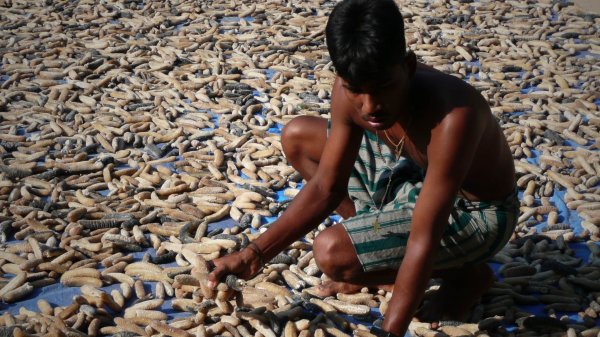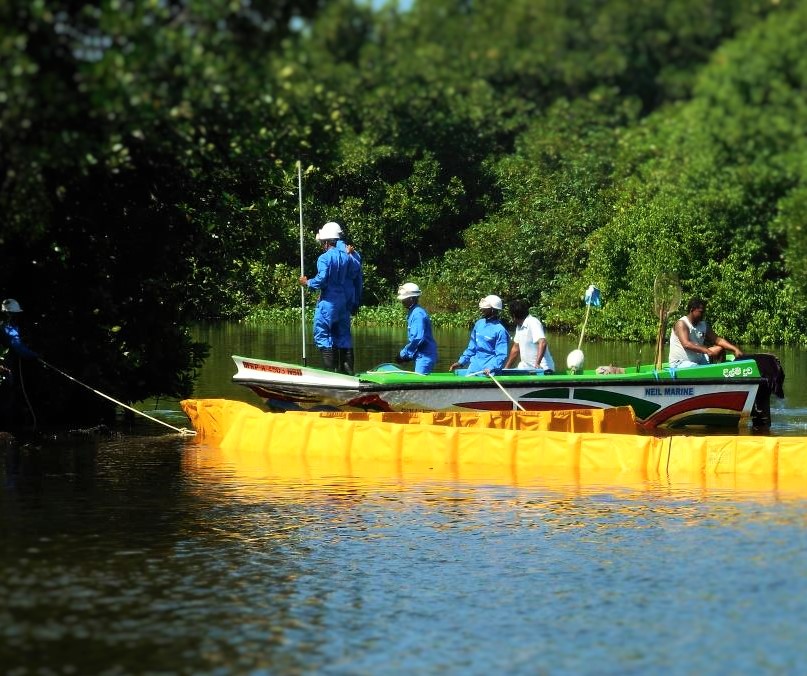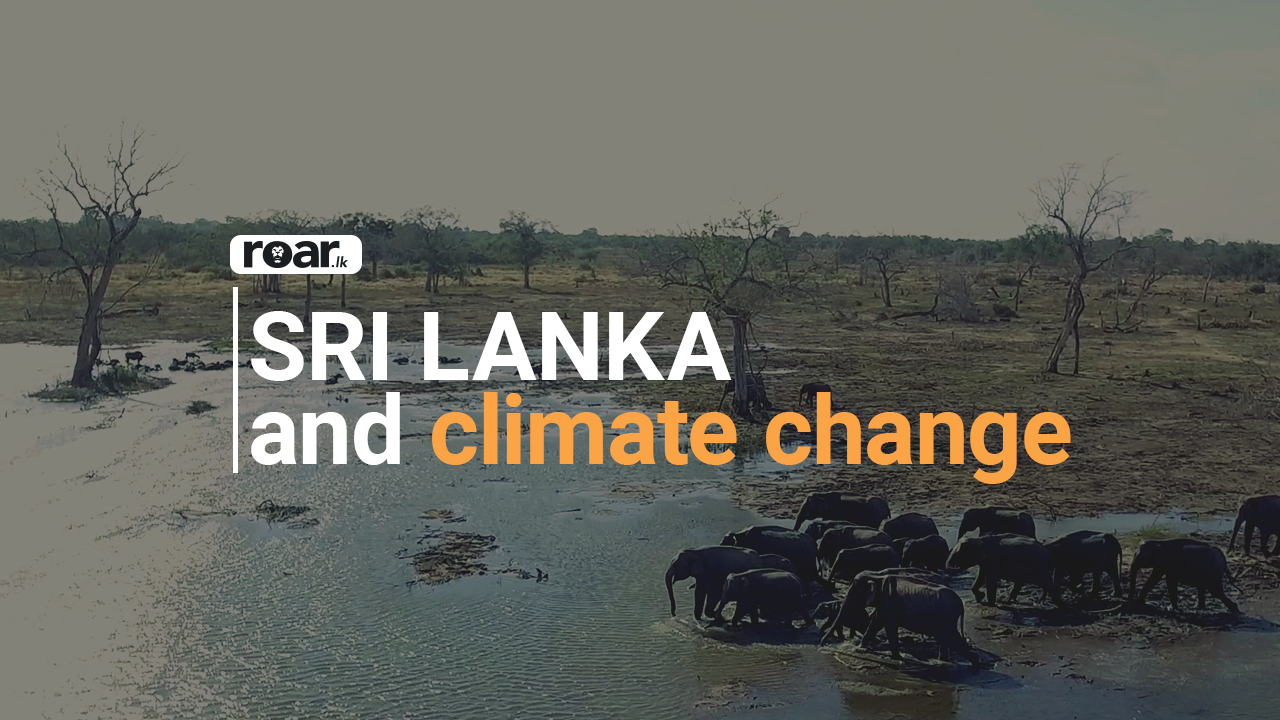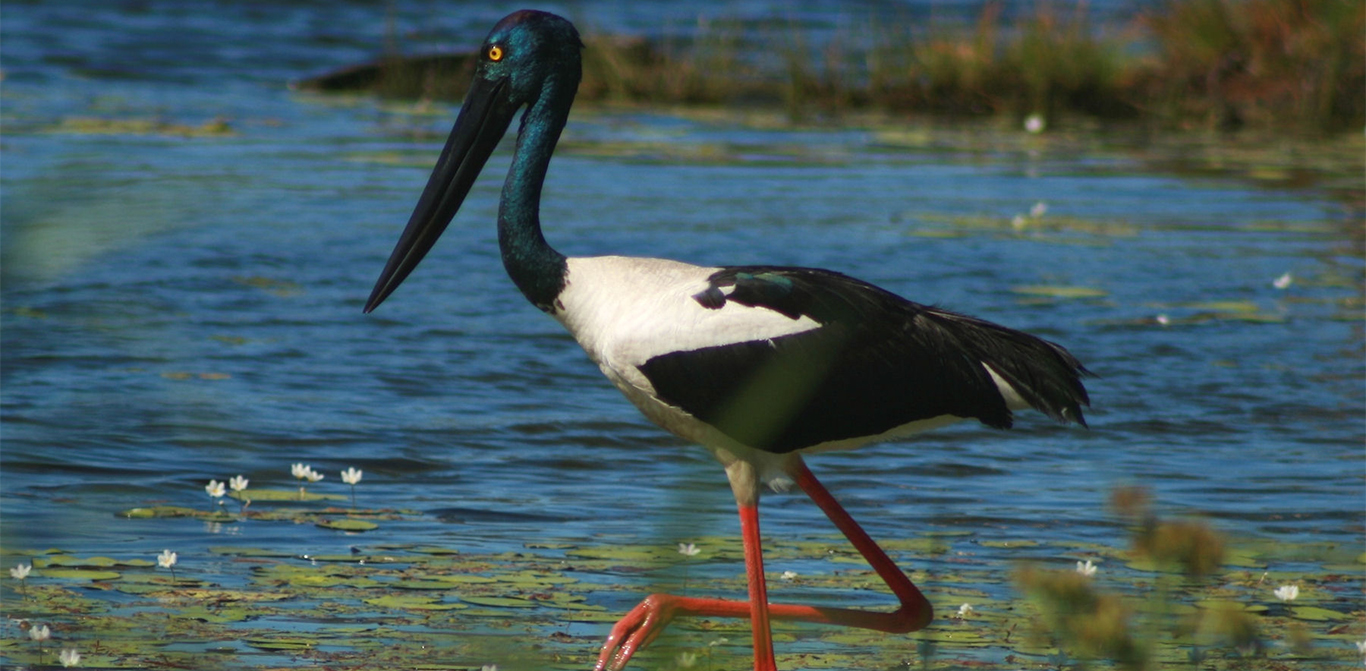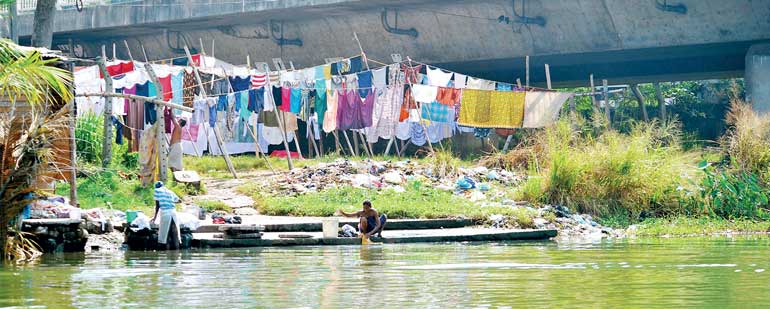
Fact: The Kelani River is the most polluted river in the country.
To say that the Kelani River is the lifeline of some of the most densely populated regions in the island would hardly be an exaggeration. At a total length of over 145 km with a 2,292 km² basin, it snakes through the Nuwara Eliya, Ratnapura, Kegalle, Gampaha, and Colombo districts, flowing past the homes and businesses of around 25% of Sri Lanka’s population and provides drinking water for over 3 million people. Its tributaries contribute to hydroelectricity generation, and countless people find direct or indirect income through transport, gem-mining, sand-mining, and other industries associated with the river. It goes without saying that protecting the Kelani is of the utmost importance ‒ for the simple reason that it’s in our own interest to do so, if not for anything else. And yet, the pollution continues unabated.
Just How Bad Is It?
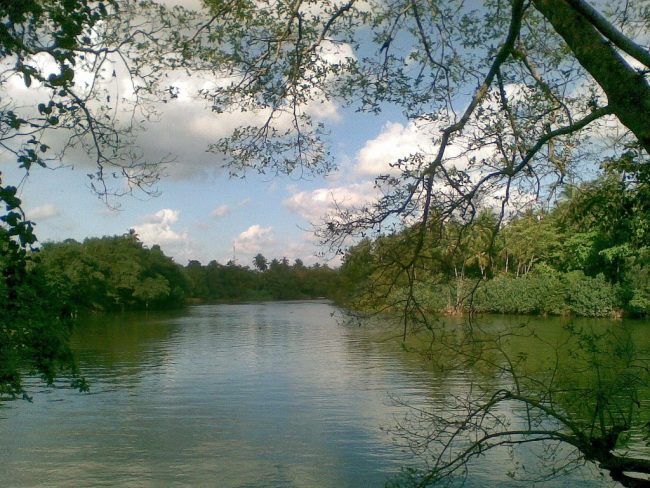
Although parts of the Kelani River present a beautiful, tranquil picture, the truth is that this is the most polluted river in the country. Image courtesy placerating.com
A study carried out by the Ministry of Environment in partnership with UNICEF and the International Union for Conservation of Nature (IUCN) reveals that pollution in the Kelani River basin has reached an all time high. Things are bad enough that the level of pollution could potentially render water sourced from the river unsafe for human consumption.
The Environmental Foundation (Guarantee) Limited (EFL) also carried out a separate survey in August 2016 to identify industries located along the river that could pose a threat to the health of the river with wastewater, direct discharge/spills of chemicals, and disposal of waste.
According to EFL Chief Operations Officer, Chamila Weerathunghe, pollution levels are particularly high past the Kithulgala area ‒ a popular watersports destination ‒ in terms of pathogens. These pathogens, Weerathunghe told Roar, are caused biologically due to contamination by untreated sewage.
“In the Kithulgala area, there are a number of rest houses which discharge untreated sewage into the river. Locals have suffered skin diseases and the presence of E-coli bacteria is proof of fecal contamination. More down the river, in addition to the biological pollution, there is chemical pollution due to industries and non-point source, agricultural activities, and contribution from bad waste management practices,” she said.
During the diesel contamination of the river in 2015, it was noted that the National Water Supply and Drainage Board (NWSDB) did not have the facilities to treat water contaminated with oil and benzene related compounds, she added.
Breakdown
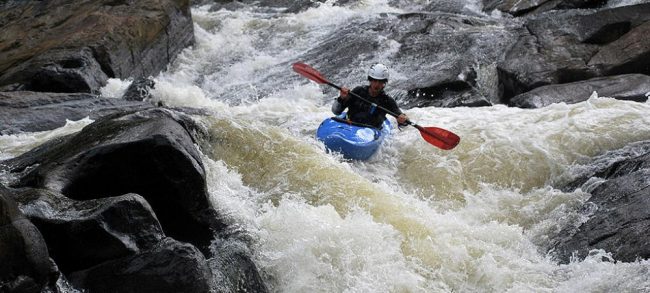
The Kithulgala area of the Kelani river is a popular watersports destination. This is also an area identified to have high levels of pollution. Image courtesy srilankainstyle.com
The main sources of water pollution of the Kelani River, according to the EFL report, are the treated and untreated industrial effluents discharged by the industries located beside the river.
Among the bigger culprits are the leather tanning industry, timber mills, oil refineries and, of course, the beverage industry.
“Everyone is contributing adversely. The BOI should take the responsibility for making sure that their common treatment plants are in order all the time,” said Weearthunghe.
A five-year estimate (carried out between 2010 and 2015) of the mass of sediments in the river indicate that, on average, about 2,300 metric tonnes of sediments flow along the river under the Hanwella Bridge located just after the steep hilly areas of the basin. The parameters that frequently exceeded the standards, according to the study, were chemical oxygen demand or COD (37%), biochemical oxygen demand or BOD (13%) dissolved oxygen (43%) and Heavy metals (7%), for measurements collected near the industrial zone in Seethawaka in the middle of the basin.
BOD and COD are measurements/indicators of the level of pollution. According to Weerathunghe, pollution is directly proportional to BOD and COD.
“It’s the amount of oxygen needed for oxidising the pollutants, and once the pollutants are oxidised, dissolved oxygen (DO) level in the water depletes, which in turn jeopardises the lives of aquatic flora and fauna. If BOD and COD are very high, after some time, a river can be considered dead with no life in it,” she said.
Industry
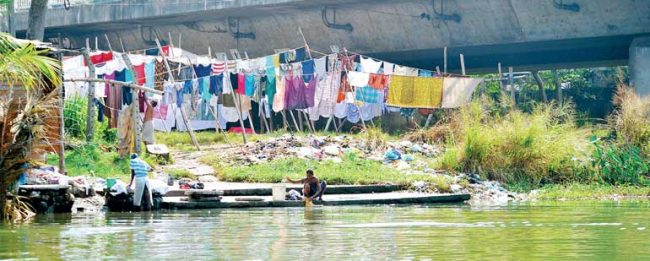
Industrial effluents are prime culprits. Image courtesy ft.lk
The Kelani River ecosystem supports over 10,000 businesses ‒ 3,000 of whom have environment pollution licenses (yes, that’s a thing). There are 37 densely populated local authority areas surrounding the river with a thriving agriculture and plantation sector as well as sand-mining operations centred around it.
The basin provides a range of services and economic benefits. However, its continued ability to do so is being challenged by industrial, urban, agricultural, and other man-made point and non-point pollution.
Human activities such as gem mining and sand mining have caused severe damage to the river bed, increasing the turbidity of the river water at all sampling locations. Microbiological contamination and turbidity are major sources of water pollution in the Kelani river. Turbidity (which is a measure of the light-transmitting properties of the water) is also a measure of the suspended particulate matter in the water and depends on the fineness and concentration of particles.
The least number of parameters and the lowest frequency of deviation from the standard value are recorded in sampling sites at Hanwella and Welivita, while the highest number of parameters and the frequencies of deviation from the standards are reported in sampling sites at the Seethawake Ferry and Victoria bridge. According to the IUCN report, the water quality index of these two locations is lower than the rest and the ecological condition of the water is “poor.”
‘Due to the complexity and cross-cutting nature of the issues related to Kelani River Basin (KRB) a multi-sector, multi-agency and multi-stakeholder approach is envisaged to ensure the long-term sustainability and resilience of the Kelani River Basin and its ecosystem services. The concept of “Kelani River Multi-Stakeholder Partnership (KRMP)” approach is developed as a pilot initiative under the National Pavithra Ganga (Clean River) Programme. KRMP will include a long-term action plan with specific roles and responsibilities for different agencies, groups, and individuals,’ the report said.
Industries scattered around the area contribute to ongoing pollution of the river in small, medium and large scales. The Central Environmental Authority (CEA) has identified land-based sources such as treated and untreated industrial effluents, agricultural runoff, domestic and municipal effluents as being the biggest contributors.
What is a pragmatic and viable way to fight pollution without hurting these businesses?
“Industries are supposed to adopt certain levels of precaution in their operations especially when they discharge,” said Dr. Mallawatantri.
Weerathunghe agrees. “Industries should be there, the preliminary solution is to come up with good solid waste and wastewater management practices, and being compliant to regulations imposed by relevant authorities,” she said.
Manageable Pollution
Pollution is high, but, thankfully, it’s not so bad that it’s out of control. Not yet, anyway.
According to KRMP Project Leader Dr. Ananda Mallawatantri who was instrumental in researching and compiling the above report, the pollution, while very much cause for concern, is at a manageable level. If contained, any disastrous effects can be mitigated in about five years’ time, he told Roar.
“The river is close to our hearts. We have a critical need to save the Kelani river. We use it, abuse it, so we have an obligation and a responsibility to work towards making sure that this river stays in that pristine quality for our future generations,” he said.
There Is Hope Yet
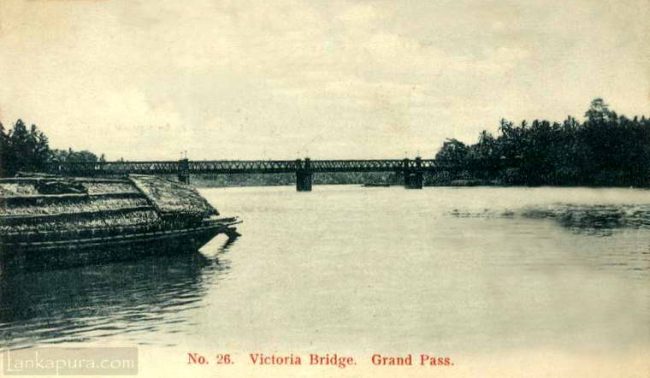
A photograph of Victoria Bridge over the Kelani river, 1906. The Kelani river has always been on of our most important rivers, so keeping it clean is should be a priority. Image courtesy lankapura.com
A sense of urgency is indicated in the proposed plan based on the fact that if the Kelani River is polluted beyond recovery it affects the entire country in multiple ways beyond the supply of water and has the potential to create a health disaster and rampant unemployment. But the trick is to save the river without drastically affecting people’s livelihoods.
“It’s about balancing the economy and the water quality, while having long-term sustainability in the river basin. You can use resources, of course, but there has to be a limit. How do you keep that limit within sustainable levels? It needs good governance, very careful use of natural resources and also we must select the right type of industries to be in the basin,” said Dr. Mallawatantri.
“There are 10,000 industries providing employment and most of them are impacting the environment. But you can’t take people out of jobs. You can probably provide better jobs through an alternative mechanism,” he added.
Weerathunghe shares Dr. Mallawathantri’s optimism.
If rigorous enforcement is brought into place, river water quality can be restored. However, she said, there is a problem with the water quantity and flash floods. That cannot be sorted within five years since the catchment restoration is to be taken place and it would take much more time.
“In five years, water quality can be restored if you have a proper programme. But quantity depletion and flash flooding cannot be resolved in short term since it’s a result of land use change in watershed areas,” she told Roar.
While pollution levels remain manageable at the moment, it does not mean we can afford to be complacent. Protective and preventative measures to ensure the safety of the water must be taken in earnest. Or, as Dr. Mallawathanthri predicts, there may not be a river left for future generations.

